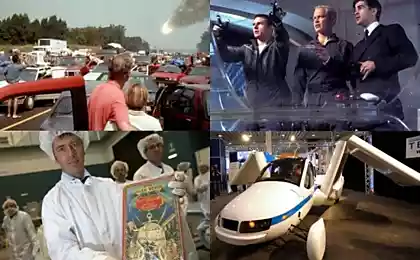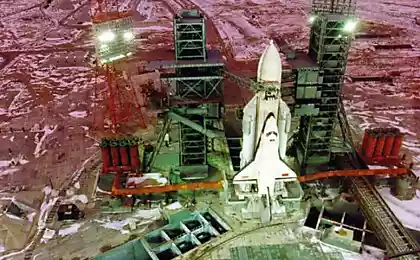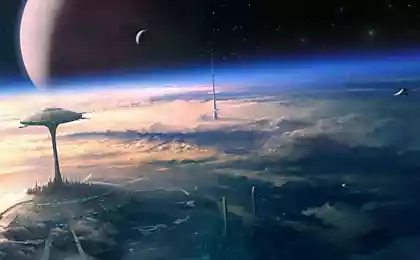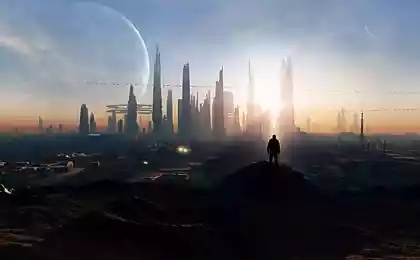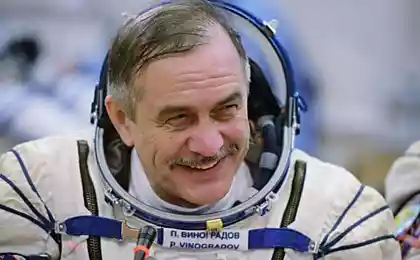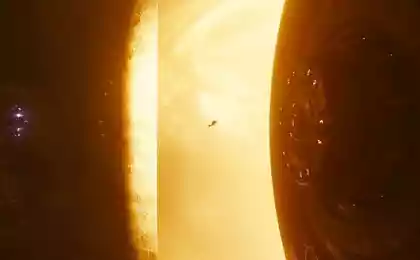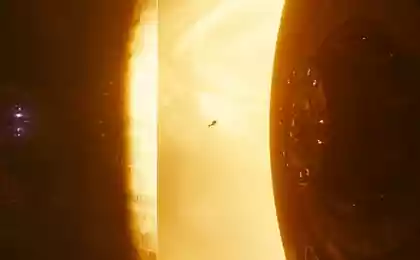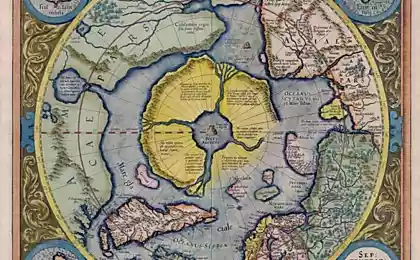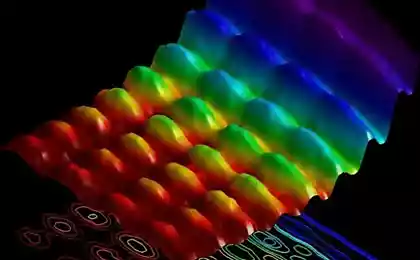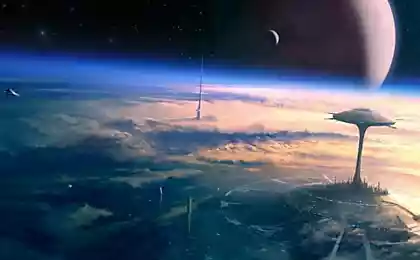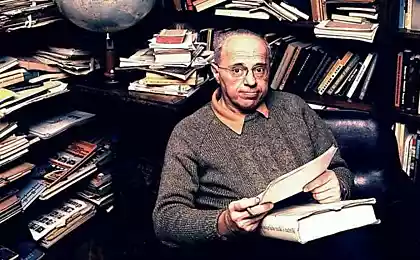243
5 science fiction novels written by real scientists

Science fiction is when mathematics, physics, and chemistry supplant magic without making the picture any clearer. But what happens when the pen is taken up by people for whom quantum mechanics, astrophysics or genetics are not abstractions, but everyday reality? In this article, we explore five outstanding science fiction novels created by real scientists who were able to turn their expert knowledge into exciting literary works.
When a scientist writes science fiction, a unique synthesis occurs - the rigor of the scientific method meets the flight of artistic imagination. Such works not only entertain, but also enlighten, often predicting technological and scientific breakthroughs long before they occur.
1. "Contact" - Carl Sagan
Carl Sagan, the legendary astrophysicist, planetary scientist and popularizer of science, offers us one of the most reliable descriptions of possible contact with an extraterrestrial civilization. Published in 1985, the novel “Contact” became not only a fascinating story, but also a serious reflection on the place of humanity in the universe.
The scientific basis of the novel
Sagan used his extensive knowledge of cosmology, astrophysics and the SETI (Search for Extraterrestrial Intelligence) program to create the most plausible first contact scenario possible. The mathematical principles, radio astronomy, and the theory of relativity are described with outstanding precision.
Key idea: Sagan is considering how to prove contact with an extraterrestrial civilization. The main character of the novel, radio astronomer Ellie Arroway, faces a paradox: she experienced an incredible journey through space, but can not prove it.

2. Fire over the Abyss by Vernor Vinge
Professor of Mathematics and Computer Science Vernor Vinge didn’t just write a breathtaking space opera – he created one of the most original concepts in the history of science fiction. The novel “Flame over the Abyss” (1992) received the “Hugo” award and became a classic of the genre.
The Concept of Thought Zones
Vinge proposed a unique idea: the galaxy is divided into concentric zones, in which different physical laws operate. The further away from the center of the galaxy, the higher the limit of possible computational power and speed of thinking. In the central zone (the Abyss), intelligent life is impossible, in the intermediate zone (the Slow Zone), the Earth is located, and in the outer zone (the Beyond) superintelligent entities inhabit.
Technological singularity: Vinge is known as the author of the concept of the “technological singularity” – a hypothetical moment in the future when technological development will become so rapid that it will be impossible to predict the future after this moment. This idea is traced in the novel through the description of superintelligent entities of the Beyond.
3. Dragon at Sea by Frank Herbert
Before the creation of the famous “Dune” Frank Herbert, who had serious knowledge of ecology and psychology, wrote a less well-known, but no less brilliant novel “Dragon at Sea” (1956). Herbert worked as a technical writer and journalist covering environmental topics, allowing him to combine scientific precision with a deep understanding of human psychology.
Psychological realism
The novel is set in a future where oil has become a critical resource. The main character is a psychologist sent to an underwater oil platform to investigate mysterious cases of sabotage. Herbert masterfully explores the psychological pressures that arise in a confined space and its effects on the human psyche.
The novel is notable for the precise technical details of underwater operations and predictions of geopolitical conflicts over oil - a problem that became relevant decades later.
4. The Last Equation by Catherine Azaro
Katherine Azaro holds a doctorate in chemical physics and a master’s degree in physics, making her science fiction works particularly scientifically credible. The Last Equation is part of the Scolian Empire cycle, where the author masterfully combines quantum physics with a fascinating plot.
Quantum technologies: Azaro uses complex concepts of quantum mechanics, such as entanglement and nonlocality, to create a plausible model of instantaneous interstellar communication. Her descriptions of mathematical constructions and physical phenomena go far beyond the usual clichés of science fiction.

5. "Gemini" - Alistair Reynolds
Alistair Reynolds worked as an astrophysicist at the European Space Agency before his writing career. His experience and deep understanding of cosmology are reflected in the novel Gemini and other works of the Revelation Space series. Reynolds fundamentally adheres to the known laws of physics, rejecting common in science fiction “assumptions” like FTL.
Hard science fiction
Reynolds is a representative of hard science fiction, striving for maximum scientific reliability. In his novels, aspects such as relativistic effects in travel at near-light speeds, terraforming problems and the consequences of using nanotechnology are worked out in detail.
The Fermi paradox in action: Reynolds pays special attention to the so-called Fermi paradox - the contradiction between the high probability of the existence of extraterrestrial civilizations and the lack of contact with them. In his novels, this is reflected in the concept of “purge” – the cyclical extinction of advanced civilizations.
What makes science fiction novels special?
The works written by scientists have a number of unique features that distinguish them from other science fiction:
- Scientific reliability at the level of detail, inaccessible to authors without specialized education
- An In-depth Study of the Ethical and Philosophical Questions of Science
- Forecasting technology based on a deep understanding of the current state of science
- Combining accurate scientific concepts with a humanistic perspective
- Educational potential that allows readers to assimilate complex scientific ideas in a fascinating way
If you want to delve deeper into the world of science fiction written by scientists, follow these tips:
- Start with works related to your interests in science – this will make it easier to understand specific terminology.
- Don’t miss scientific explanations – they are often the most interesting part of the story.
- Explore the biographies of the authors – understanding their scientific background provides additional context.
- Pay attention to the dates of publication – this will help to assess how far-sighted the scientific forecasts were.
- Compare the concepts presented in the books with the current state of science.
Conclusion
Science fiction novels written by scientists are a unique genre at the intersection of literature and science. They not only entertain, but also enlighten, stimulate interest in scientific disciplines and make you think about the future of mankind. The works of Sagan, Vinge, Herbert, Azaro and Reynolds demonstrate how scientific precision can enhance, rather than weaken, the artistic impact of literature.
In a world where science and technology are advancing at an unprecedented rate, books like these help us to understand the possible paths of civilization and prepare for the challenges of the future. They remind us that there is no contradiction between rigorous scientific knowledge and the flight of creative fantasy; on the contrary, their synthesis can produce more than the sum of the parts.
Glossary
SETI (Search for Extraterrestrial Intelligence)
Project to search for extraterrestrial civilizations by detecting and analyzing electromagnetic signals of cosmic origin.
Technological Singularity
A hypothetical moment in the future when technological progress will become so rapid and complex that it will be impossible to predict the further development of human civilization.
The Fermi paradox
The contradiction between the high probability of the existence of extraterrestrial civilizations and the absence of observable traces of their activities.
Quantum entanglement
Quantum mechanical phenomenon in which the states of two or more particles are interdependent regardless of the distance between them.
Hard science fiction
A subgenre of science fiction characterized by attention to scientific certainty and technical detail, a desire to avoid violations of known scientific laws.
Terraforming
The hypothetical process of changing the climatic conditions of the planet to create an environment suitable for life of terrestrial organisms.
Relativistic effects
Physical phenomena that occur when moving at speeds close to the speed of light, such as time dilation and length contraction.
The Popcorn Brain: Why You Switch From One Task to Another
11 Behaviours You Follow Because You Have No One to Rely on

